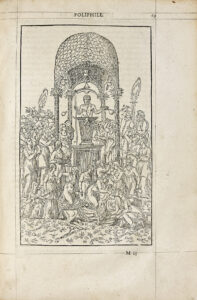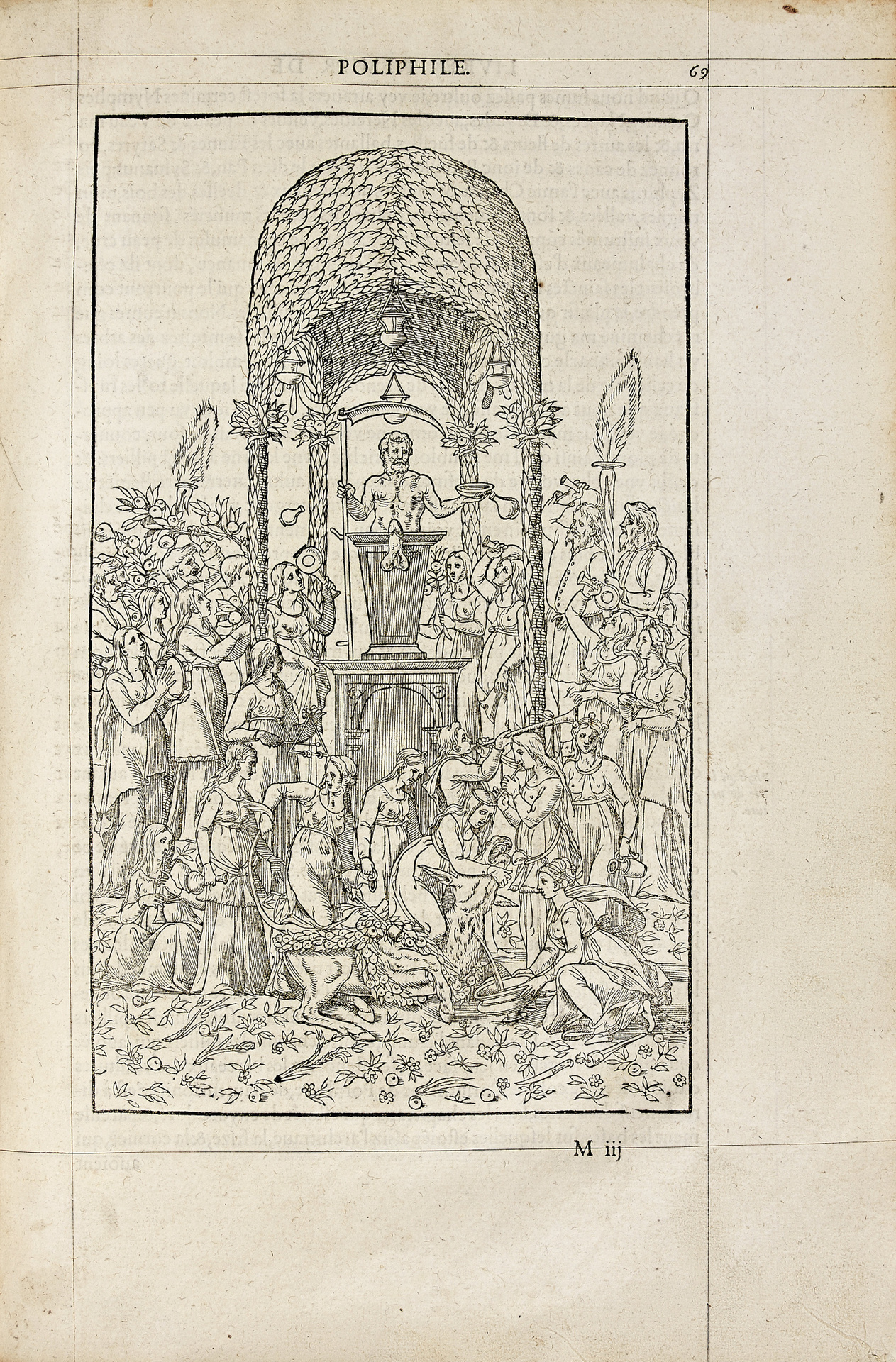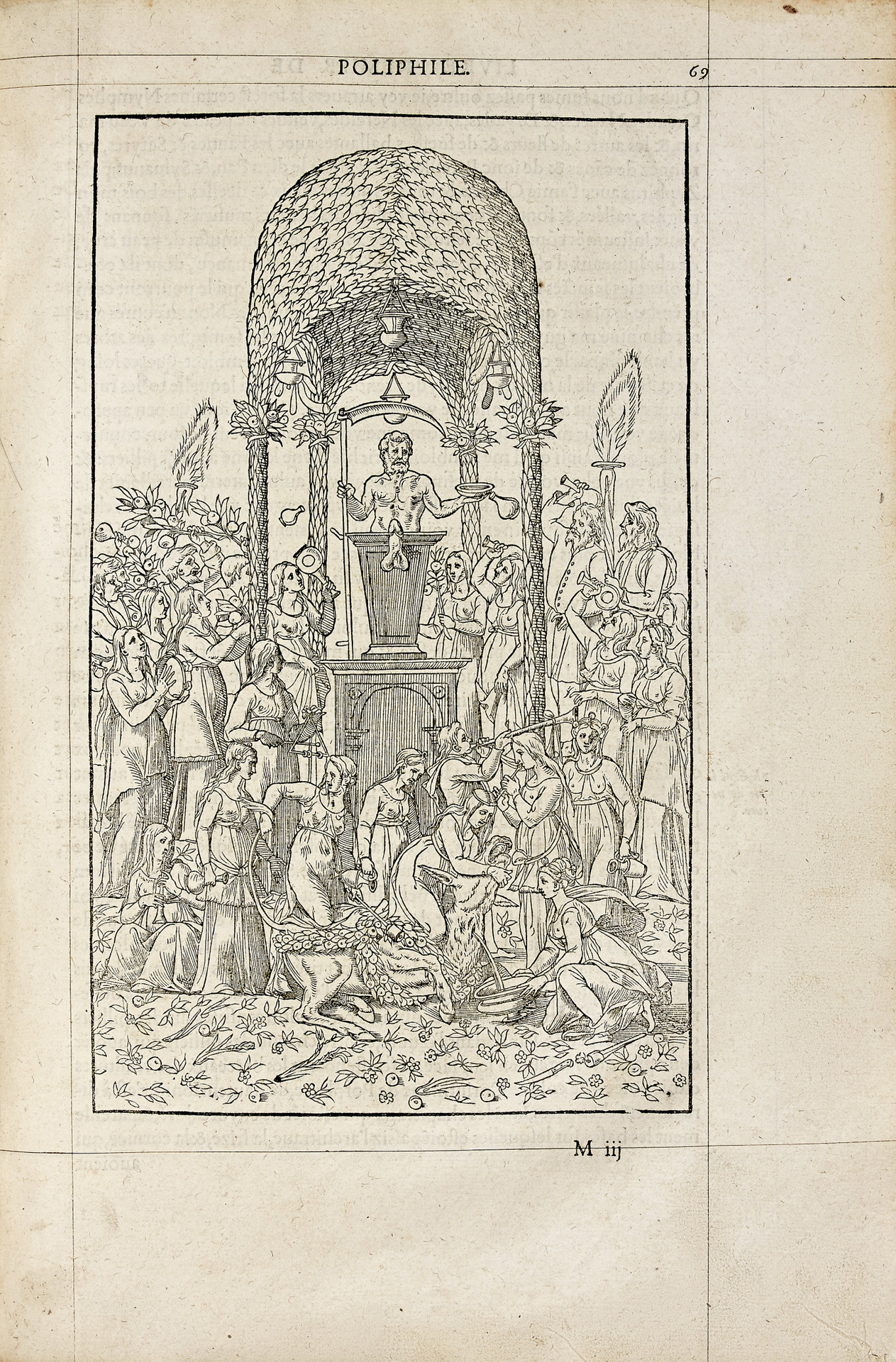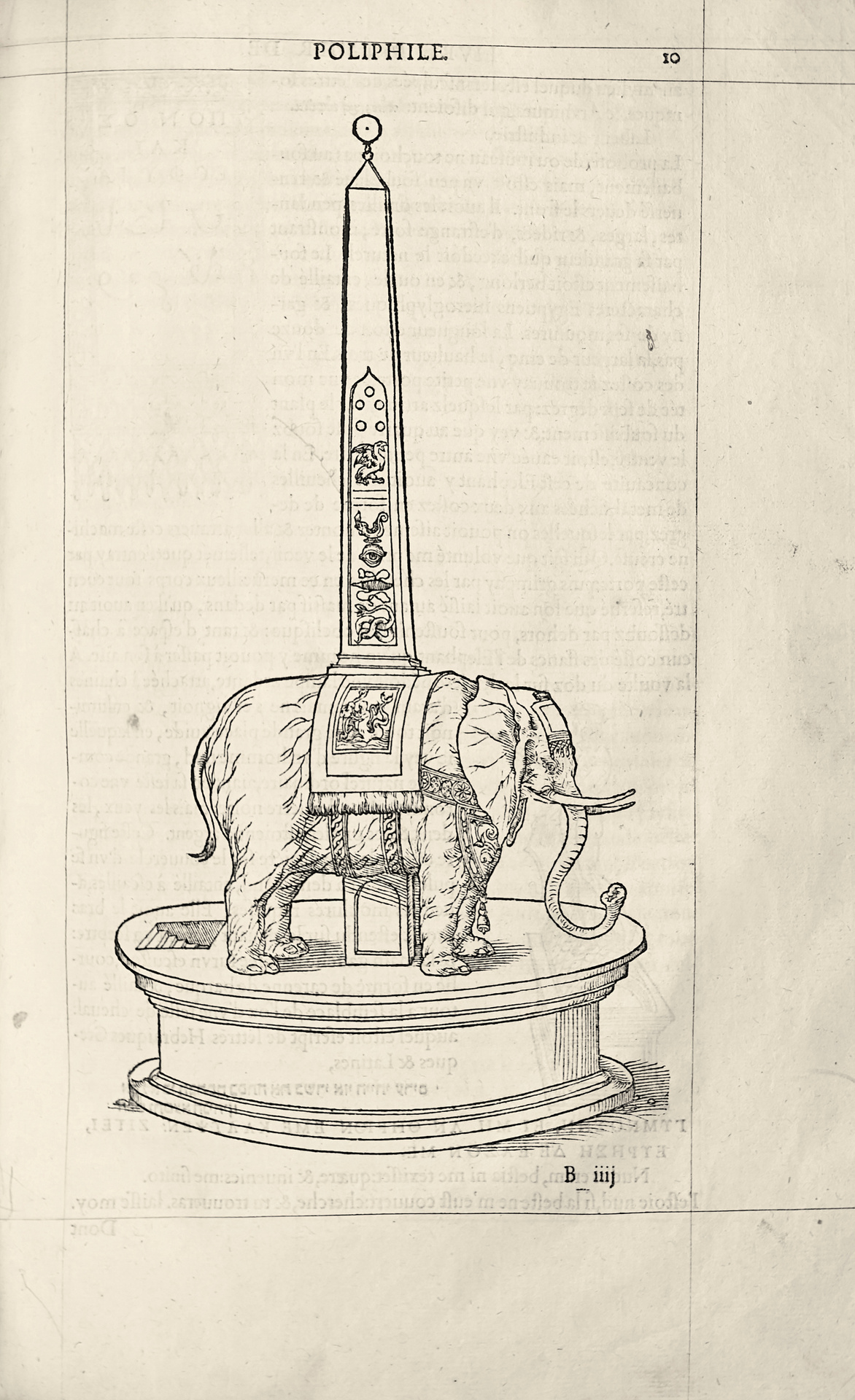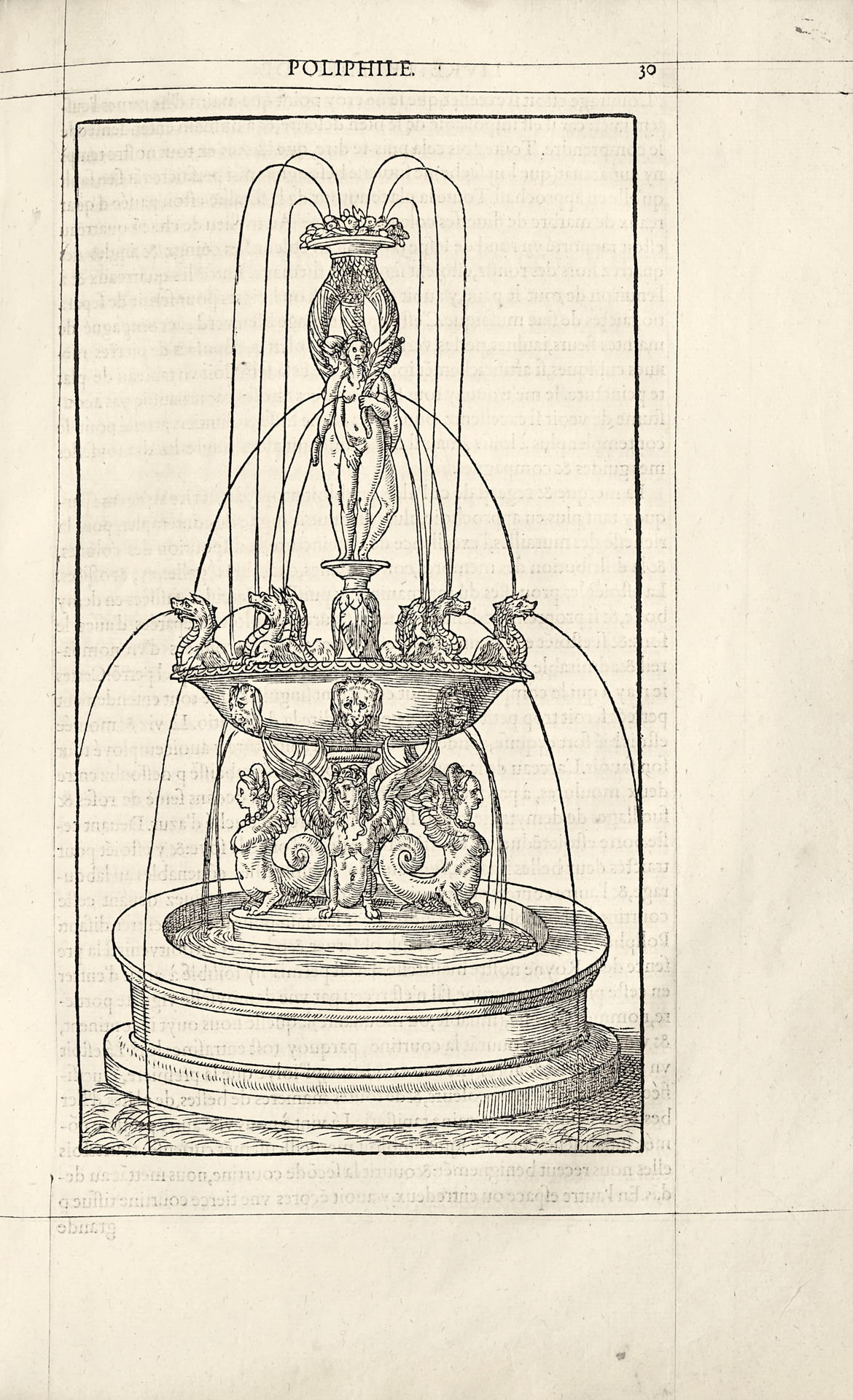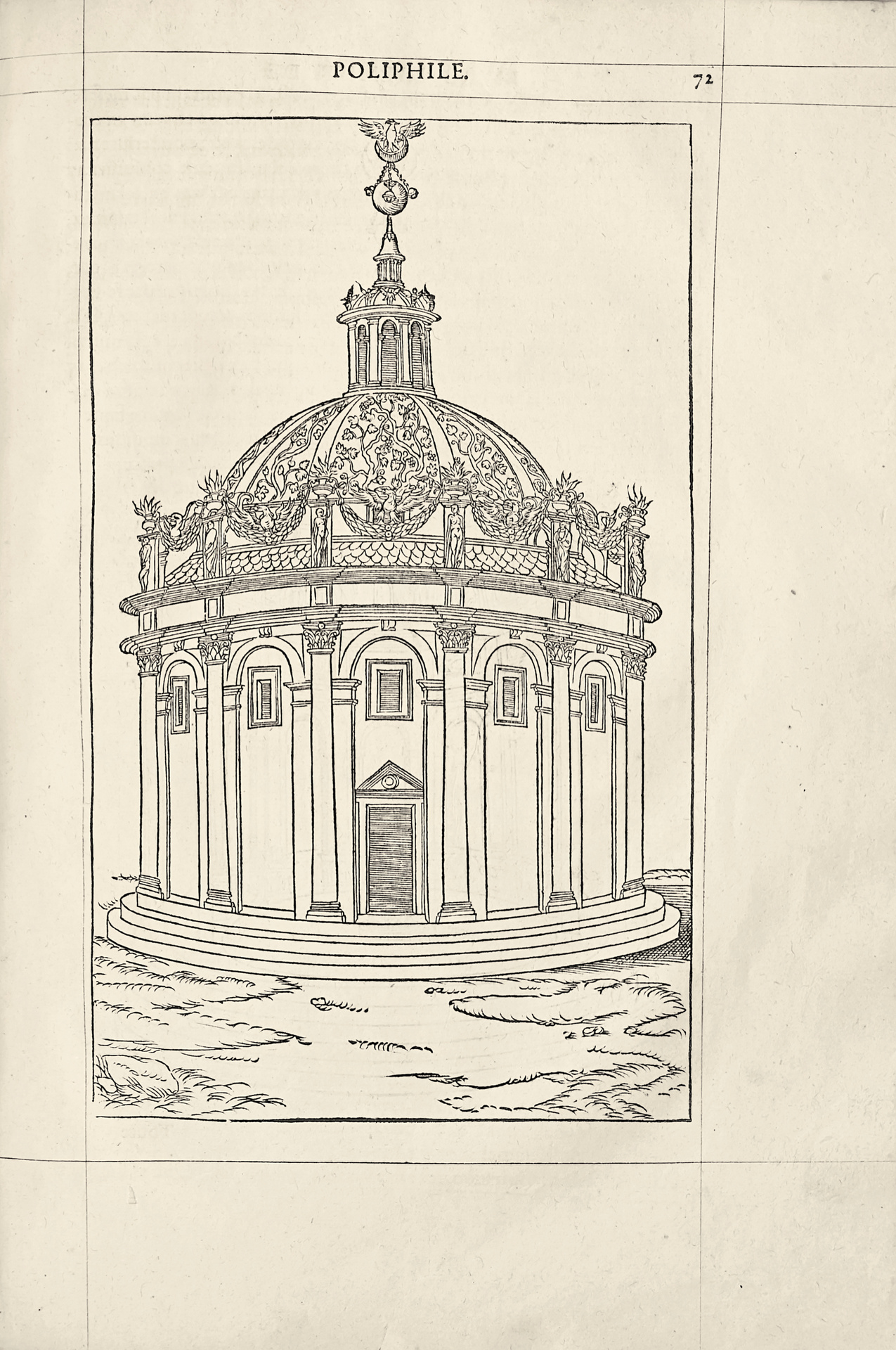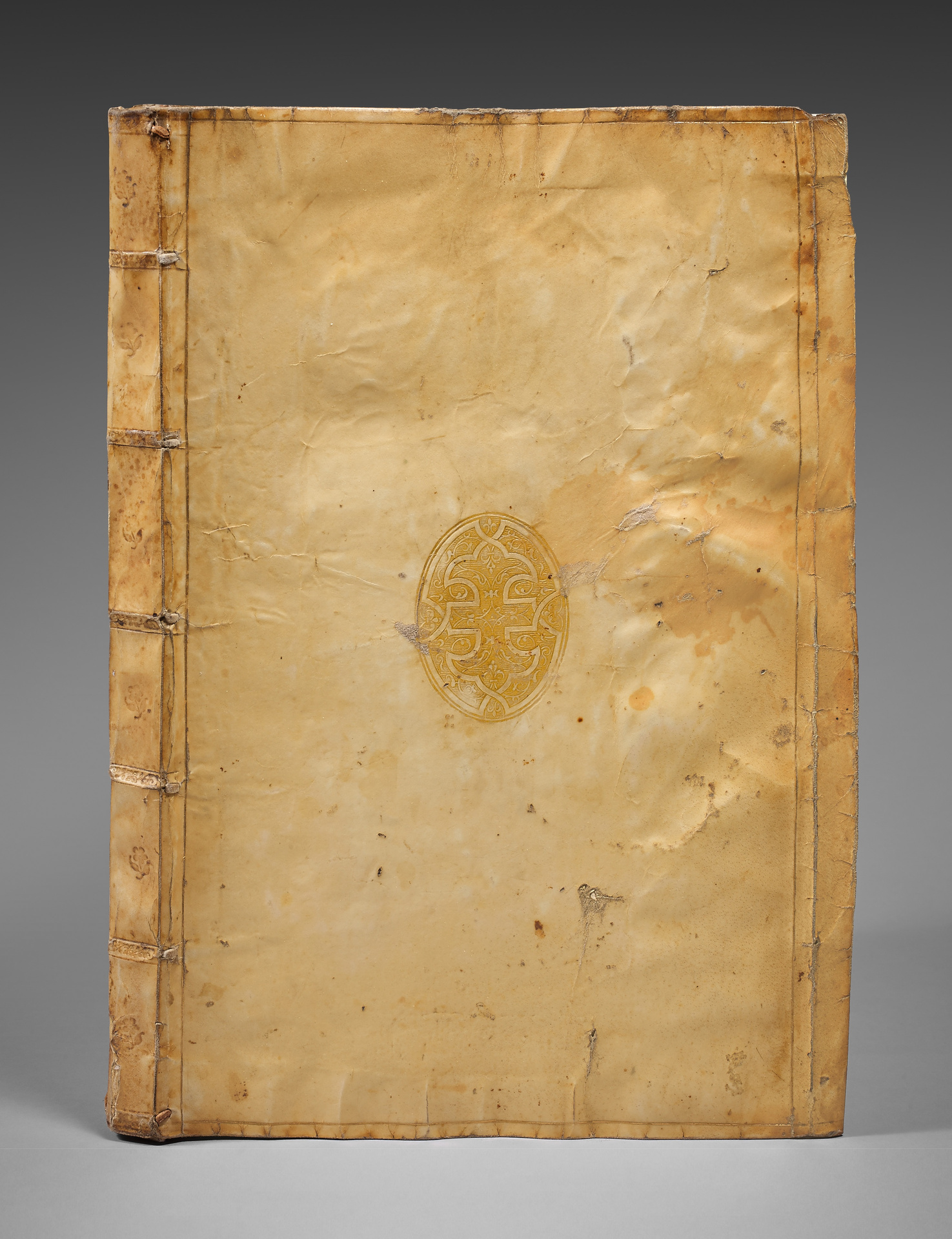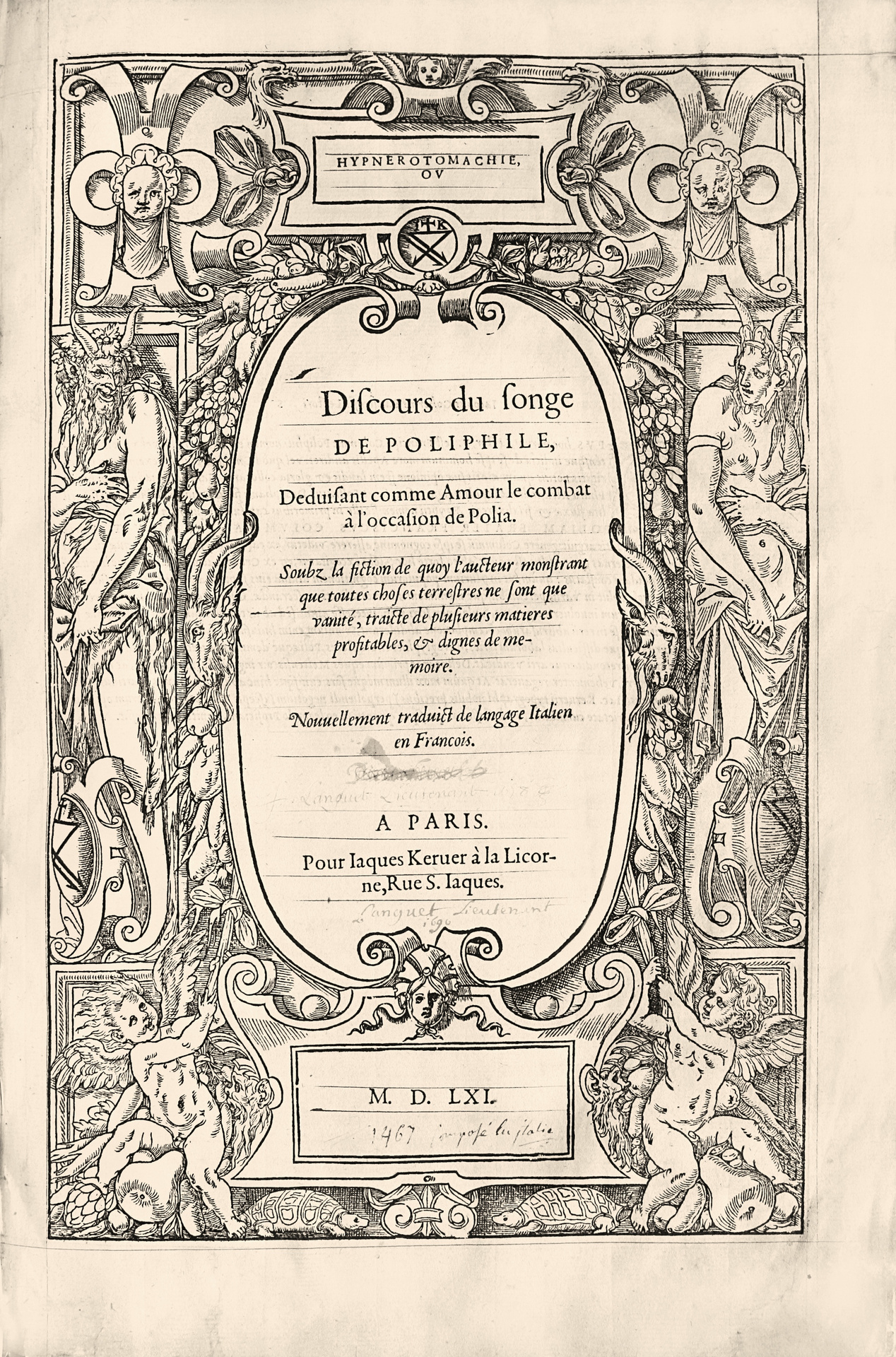Paris, Jacques Kerver, 1561.
Folio [336 x 221 mm] of 6 ll., 157, 1 (l). 181 woodcuts in the text of which 13 full-page. Old handwritten note in ink on the title. Placed in a contemporary gilt vellum binding, gilt fillet around the covers, gilt-stamped medallion in the centre, flat spine decorated with gilt fleurons.
“The most important of the three editions given by Kerver of the first translation by Jean Martin of the most beautiful and famous Italian book of the Renaissance, published in 1499 in Venice by Alde.” (Pierre Berès).
Brunet, IV, 779 ; Harvard, French, n°147.
This extraordinary love story is a landmark in Renaissance literature.
The work is dedicated to the comte de Nanteuil de Hardouyn, Henri de Lenoncourt, Governor of Valois by the translator Jean Martin.
The book thus became specifically French, the translator himself indicating that he worked from an “Italian language mixed with Greek and Latin“.
The text, which became especially famous through the very beautiful edition printed by the Manutius family in 1499, is of capital interest and may be rightly regarded as one of the leading works of fiction novel.
Beautifully printed by Marin Masselin, this edition is the last and most important of the three given by Kerver.
It is illustrated with 181 woodcuts, 13 of which are full-page.
The figures are the same as in the first French edition given by the same publisher in 1546; only one figure has been modified: the full-page figure on folio B6 v°, representing an antique doorway with columns fitted with capitals derived from the Doric order and tending towards the composite. This shows a clearly expressed architectural concern.
In the French edition of 1546, as in the Aldine of 1499, this engraving did not show the capitals of the columns and reproduced a rather shapeless drawing, cluttered with comments reported in writing and with figures.
“This edition, like the 1554 edition that preceded it, presents a very interesting variation from the French first edition of 1546. Replacing the privilege dated 8 March 1543 of the 1546 edition, the verso of the title contains a preliminary leaf, curiously written in Latin, signed by Jacques Gohory, 1520-1576, of ancient Tuscan family origin. Close to the Pleiades and the circle of Antoine de Baïf, Gohory devoted himself to the study of poetry, music, alchemy, natural history, philosophy and medicine, after having been entrusted with missions in Flanders, England and Rome.
He was responsible for the creation of a private academy, the ‘Lyceum philosophal’, which competed with Baïf’s Royal Academy of Poetry, founded two years earlier, as well as the French translation of numerous Latin, Italian and Spanish texts.
This note, which appeared for the first time in the 1554 edition published the day after Jean Martin’s death and which is found in all subsequent editions, confirms the indication given by Martin in his introduction of the acrostic formed by the initial letters of each chapter giving the key to the authorship of the work: Poliam Prater Franciscus Columna Peramavit (Brother François Colonna burnt with love for Polia). In his dedication to Henri de Lenoncourt, his patron, and in his notice to the reader, Jean Martin indicates that a translation by a virtuous gentleman was given to him by a friend for review; he adds that, to his regret, the Italian text was not translated directly by Nicolas Herberey. In his note, Jacques Gohory identifies himself as the friend who passed the work on to Jean Martin after a certain knight of Malta had drawn up a sketch of it. The latter was thought to be the brother of the dedicatee, Cardinal Robert de Lenoncourt, whose Martin was secretary for some time”.
The initials in arabesques containing the famous acrostic with the name of the author, which made their first appearance in Paris, have been specially designed for this book. Their appearance is improved compared to their first use in the two other editions by Kerver of the Hypnerotomachia, since they are no longer surrounded by a fillet as in the 1543 edition and thus present all the elegance of their construction. Following the dedication is a French opening poem on the reverse of which is printed an Italian sonnet in which there are variations from the text published in 1546, both in the Italian original and in the French translation given in verse below: the initials GPM, which in the 1546 edition preceded the Italian sonnet have disappeared, and the Italian motto which followed it has been replaced by this Latin motto: Coelum, non solum (Heaven, not earth).
An attractive copy of one of the landmarks of illustrated literature of the Renaissance.
